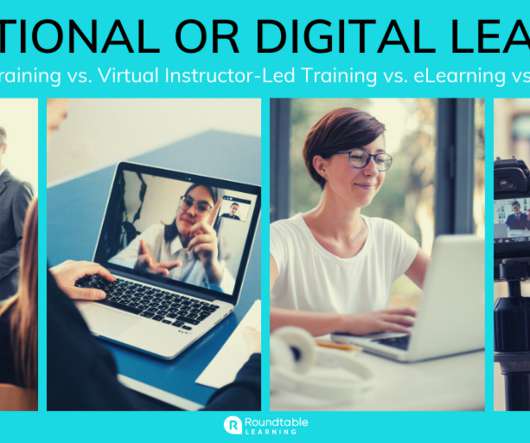What Is Blended Learning? Less Than 100 Words
Roundtable Learning
JANUARY 11, 2021
In learning and development (L&D), there is no one-size-fits-all solution for learners, which is why a blended learning program may be the right option. It’s the best of both worlds that incorporates both synchronous and asynchronous styles and tools to create a training program that works for everyone. What Is Blended Learning?


















Let's personalize your content